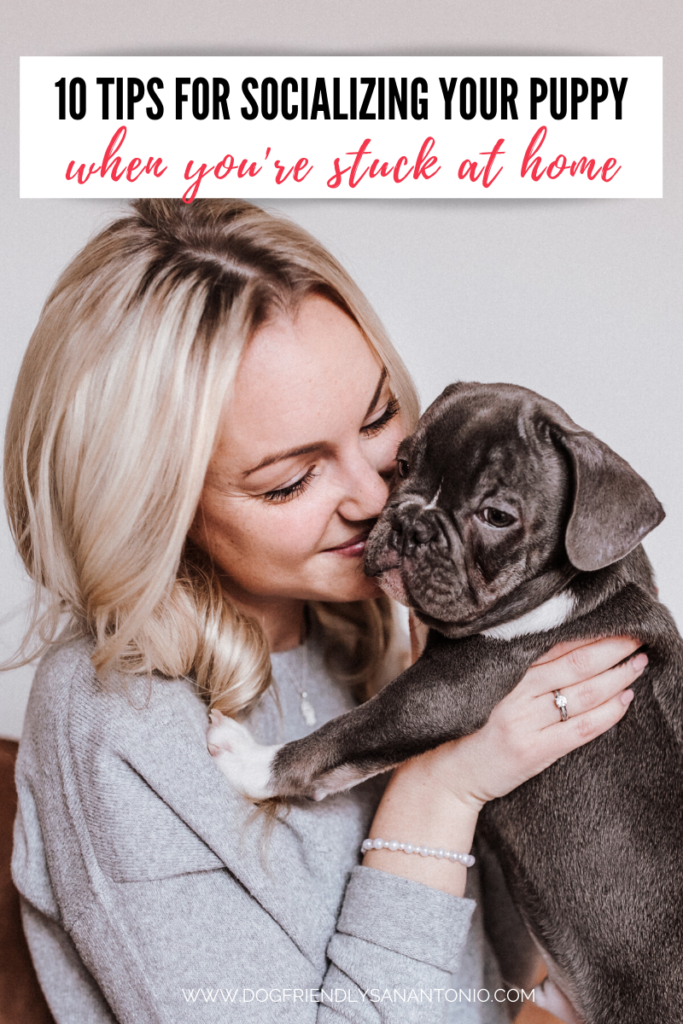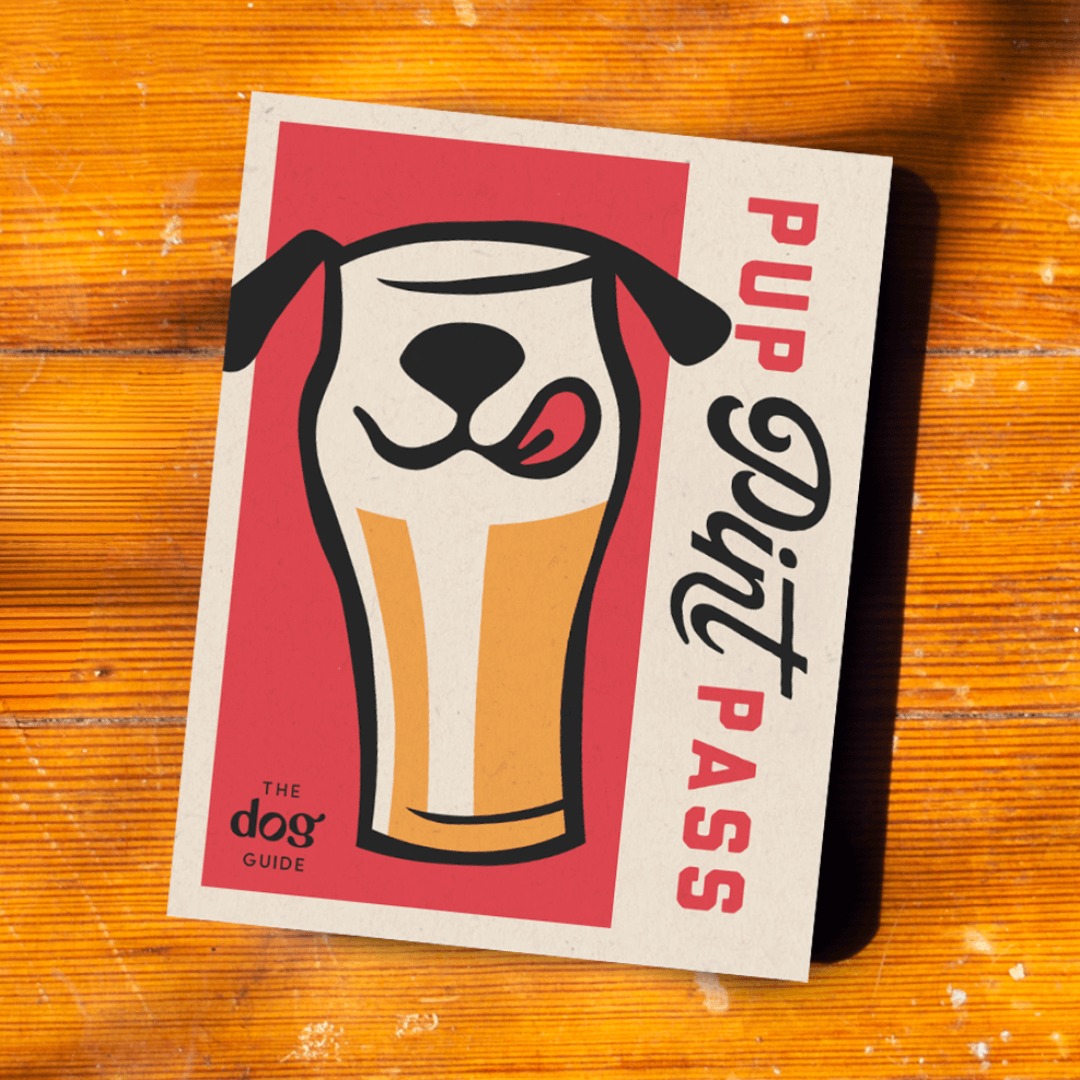
If you’re privy to puppy socialization guidelines, you’ve probably heard the 250 rule: your puppy must meet 250 people by the time she is 5 months old. But living through a global pandemic kind of makes that difficult.
But do not fret, my pet! The most important principle of puppy socialization is exposure. It’s about building a strong foundation of stimuli that allows your puppy to build the ability to adapt to new, never before seen stimuli later in life. If I expose my puppy at such a young age to many things now, he builds this “bounce back” ability to encounter new stimuli later and not be too thrown.
And there are still PLENTY of stimuli that we can introduce our puppies to, we just have to be a little creative. Here are a few ideas:
1. Introduce Household Items
Somewhere around 4-6 months, our puppies start to notice things in their home environments that have always been there but somehow “appeared out of nowhere.” These items tend to stand vertically––lamps, vacuum cleaners, statues, plants, etc. Meet this head on and throw treats around the item and let your puppy eat and explore nearby. You may need to lay down these items on the floor the first few times so your puppy can really get to know the item. Also, think about the items that make a lot of noise––hair blow dryers, the washing/drying machine, vacuum cleaners (again). Let your puppy explore these items before they start making noise and increase the treat value when they start making noise. If possible, introduce the sound in the lowest form and increase with time and exposure. Consider habituating your puppy to the doorbell. The reason why dogs go nuts when the doorbell rings is because it opens this magical portal for friends (or enemies) to appear in. So, ring the doorbell a few times a day, or get a recording of it and ring it so often that your dog realizes it’s not an antecedent for excitement.
2. Play Dress Up
This is something I talk about to my parents who get puppies in the summer. Their puppies grow up when everyone is wearing tank tops and shorts, and when the puppy is out of their primary socialization period, it’s time for everyone to put on puffy jackets, hoodies and boots. So, put on your fluffiest jacket and all the hats and toss treats at your pup.
3. Use Your Puppy’s Sniffers
Play around with introducing new scents. You can put on different lotions, diffuse essential oils, or light candles to change the environment and help generalize training.
4. Introduce New Sounds
Find videos from YouTube of other animal or city noises. Start with a low volume and increase the noise as you expose your dog more.
5. Kennel Train
Eventually you will leave the house and the kennel will be necessary. So, start prepping your puppy by having them eat meals in the kennel with the door open, and teach a kennel up cue (ours is “after you”).
6. Leave Your Puppy for Small Amounts of Time
Your puppy will get very used to and dependent upon you being home. And eventually, you will be going back to work. So set your puppy up with a fun long lasting chew, take a walk around the block, and come back without making a big deal upon arrival.
7. Practice Vet and Grooming Behaviors
Have your puppy earn treats by having him stand on a table while you touch different body areas like a vet or groomer would during services. Use a pen to simulate the feel of a vaccine and the round part of a spoon to simulate the cool surface of a stethoscope. Desensitize to brushes, nail clippers and other tools.
8. Practice Having Your Puppy Step and Stand on Different Surfaces
Old cookie sheets, wet towels, sheets of foil, wet grass are all great surfaces to start with.
9. Take a Virtual Training Class
It’s never too early to start teaching your puppy. In fact, she’ll be learning something whether or not you’re actively teaching her appropriate manners. So, get the help of a certified trainer and be sure you’re setting up structure and manners the right way.
10. Work With the Door That Visitors Come Through
If you have a garage and a front door, you may be walking in through a different door than your visitors which gives the visitor door more value because it brings something unexpected and not as practiced. Practice coming in and out of the visitor door to give it less value and teach your puppy appropriate manners at the door (not jumping up, maybe a place bed-stay or down-stay).
So, take advantage of this time with your puppy and realize that you won’t be too far behind if you implement some of these strategies. Start researching in-person group classes to get into when this blows over. I know a pretty cool trainer who offers the virtual training for now and the group classes for later 😉


My girl just turned three, so she is no longer a pup, but she has been bouncing off the walls. No dog parks, park closures and the dog friendly stores/restaurants face-to-face limitations have made socialization very difficult.
Luckily we were able to walk the entire riverwalk two months ago before the closures, but that seems like a long time! Although seeing another dog or cat while walking the neighborhood can make a big difference. There’s no play time to be had, but it’s better than nothing.
You mentioned the doorbell and I’ve been curious about something. We adopted our girl when she was one. We’ve never had the “ding-dong” type of doorbell. In fact, we have a Ring. As far as we know she has never been exposed to a situation where she would hear “ding-dong” and run to see who is at the door. However, if a doorbell rings in a movie, she runs to the door and barks even though no one is there! It’s so bizarre.
Kudos on walking the entire River Walk, that’s a feat! And adorable that Abby barks at TV doorbells still. Hope you get to enjoy the outdoors together soon!